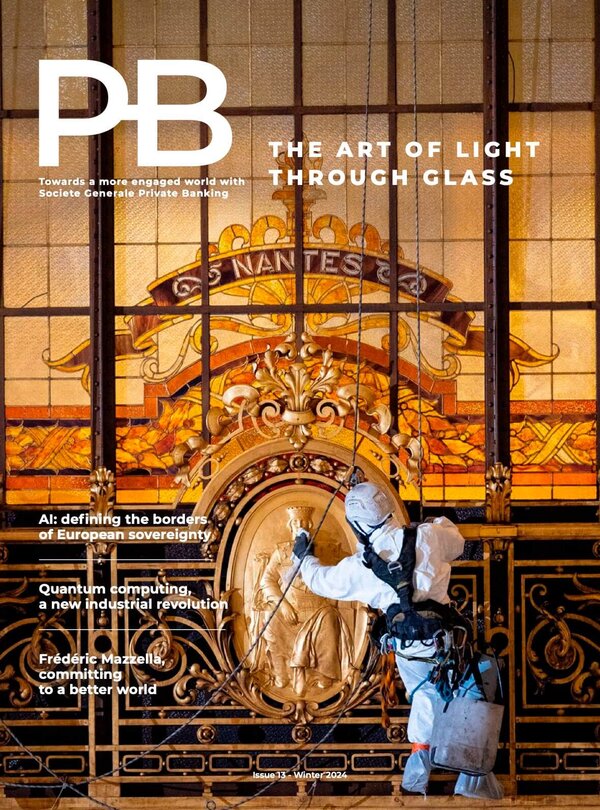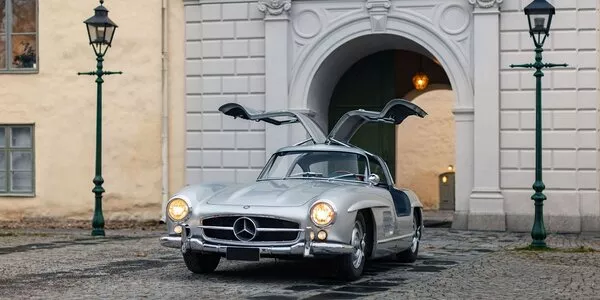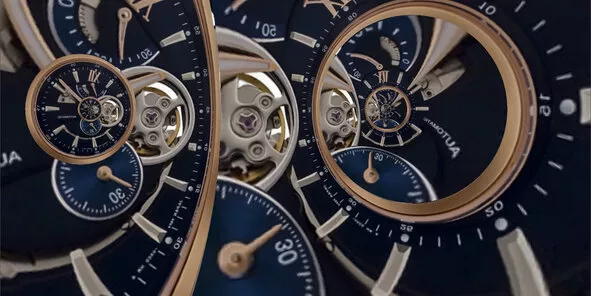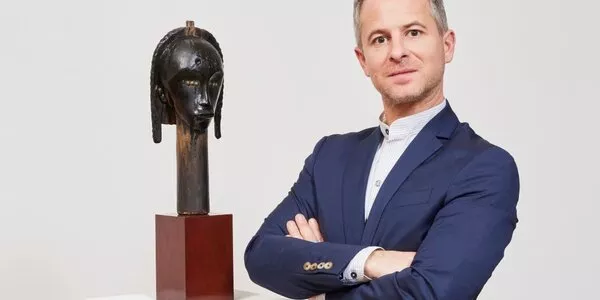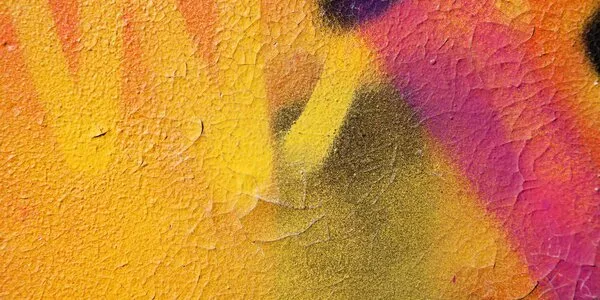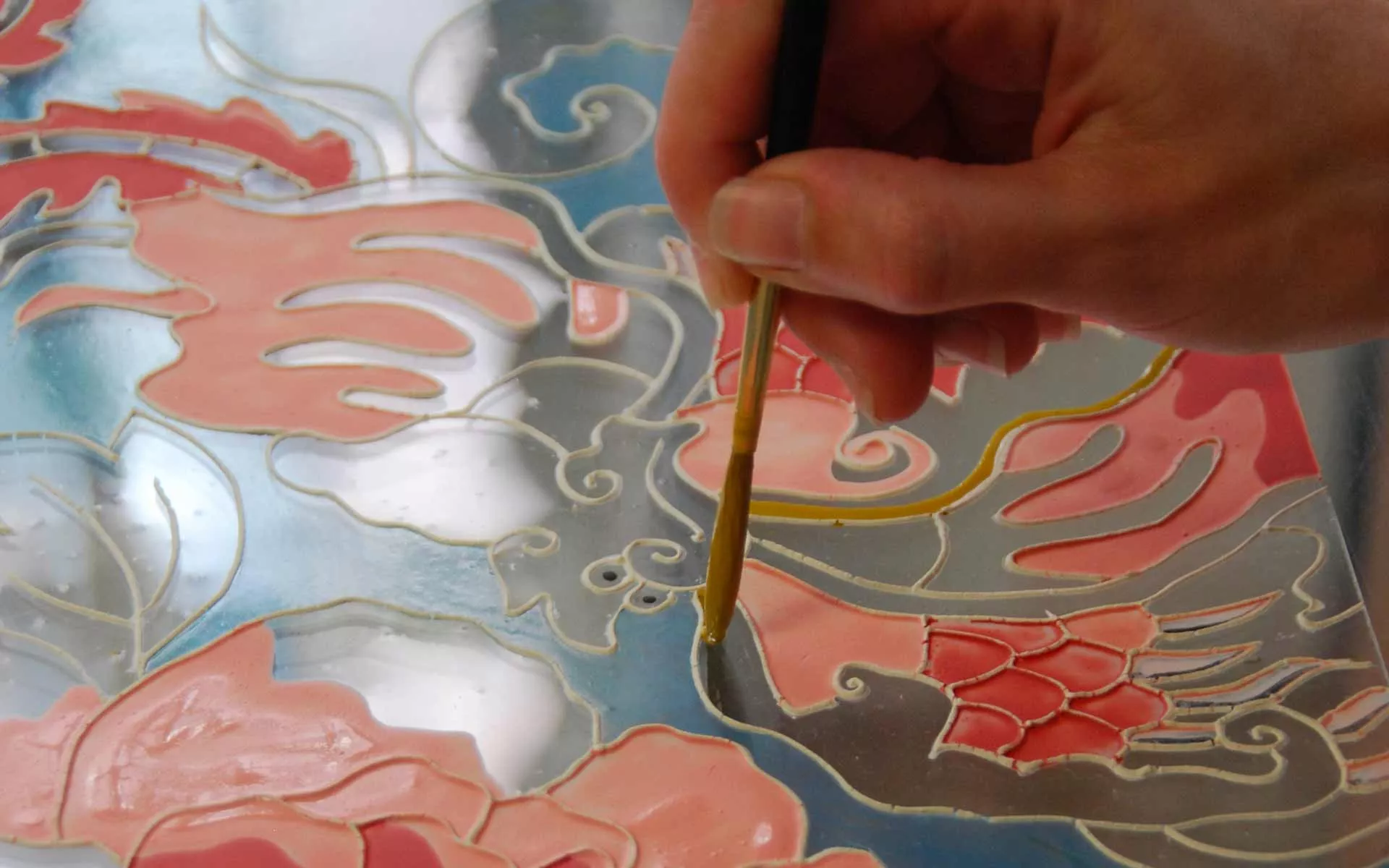
Ateliers Duchemin: a legacy of glass and light
Painting on glass. Ateliers Duchemin
Alongside her sister Charlotte, Marie Rousvoal is co-director of the Ateliers Duchemin, which have now been practising the art of stained glass for six generations. A family story that is inseparable from the history of art and stained glass, the Duchemins have collaborated with some of the greatest artists and architects bridging the last three centuries. The company now puts this exceptional know-how to work on the restoration of precious historical works and the creation of modern, contemporary stained glass for a new generation.
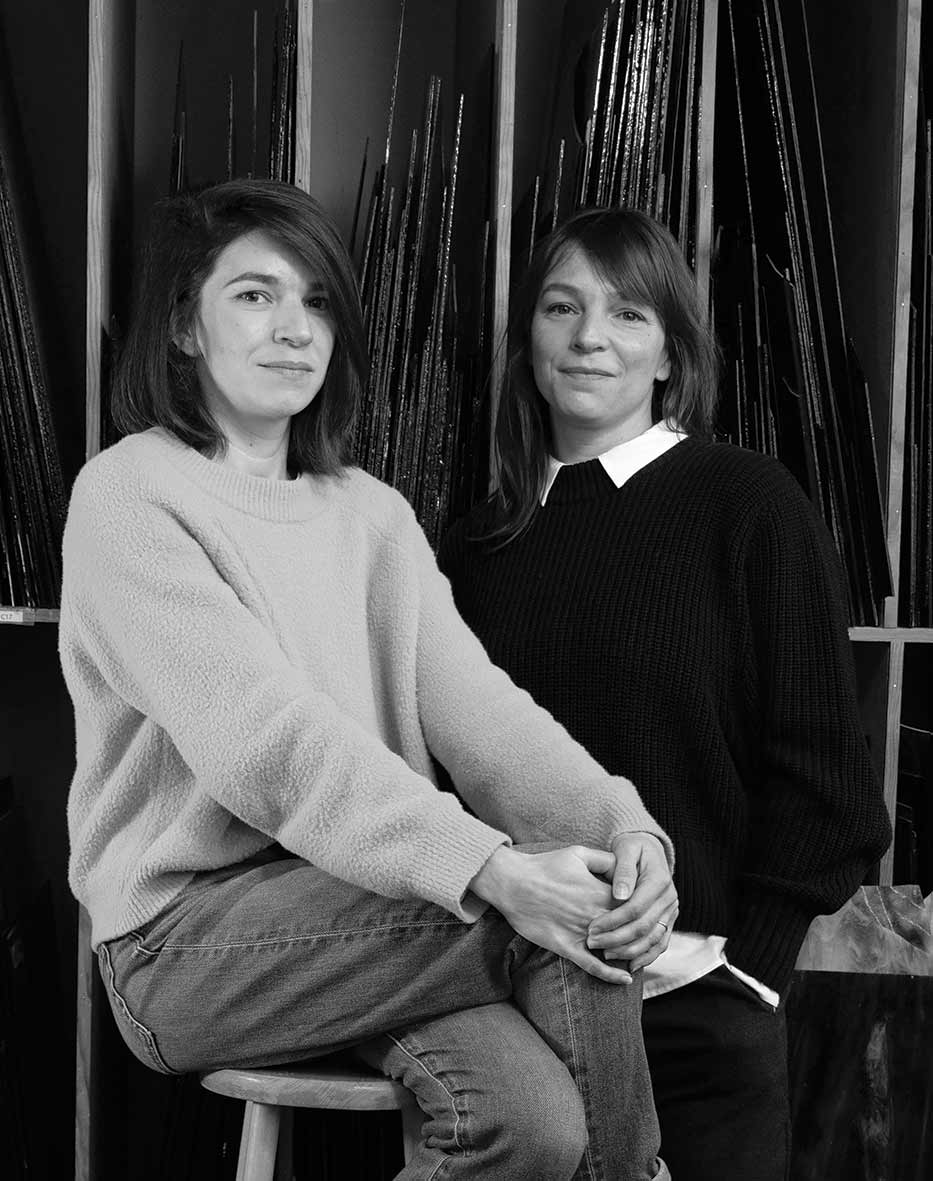
Charlotte and Marie Rousvoal
.
When does this family know-how date back to?
Marie Rousvoal: In the mid-19th century, my ancestors were glass painters, and more specifically painters of flesh tones — the flesh of faces or hands — on religious stained glass windows. Like most artists at that time, they were itinerant. From the end of the 19th century, they joined the workshops of master glass-makers who were prominent in their respective eras, such as that of Jacques Gruber, a major figure of the Nancy school, then Paul Bony in the 20th century, who created the stained glass windows designed by Matisse for the Rosary Chapel in Saint-Paul de Vence.
In the 1950s, my grandfather, Claude Duchemin, decided to establish his workshop and became interested in Parisian stained glass. My parents continued the family tradition, working a lot with contemporary artists on major public commissions. Today, we are preserving that which embodies our family’s artistic history: a very varied culture of stained glass, both religious and decorative, in collaboration with contemporary artists.
Since the beginning of your family’s story as master glass-makers, has the profession evolved?
M.R.: The craft has remained essentially the same since the Middle Ages, except that in the beginning, master glass-makers actually blew the glass themselves! Cutting, setting, colouring, painting, installation... This applied art requires mastery of all the stages of stained glass manufacture and a real intelligence of hand and body.
Stained glass is by nature a complex material, with strong technical constraints in terms of load-bearing capacity or volume. The challenge is to work within these constraints to make them as flexible as possible by demonstrating creativity and ingenuity. This pushes us to invent, for example, new tools and to continually experiment. Whatever the request, we rarely say “no”. We first look for a solution to create a stained glass window even if, at first glance, it seems technically impossible.
So, to maintain this level of skill acquired over the years, it is essential to work on both restoration and new, creative projects.
This art requires a real intelligence of hand and body.

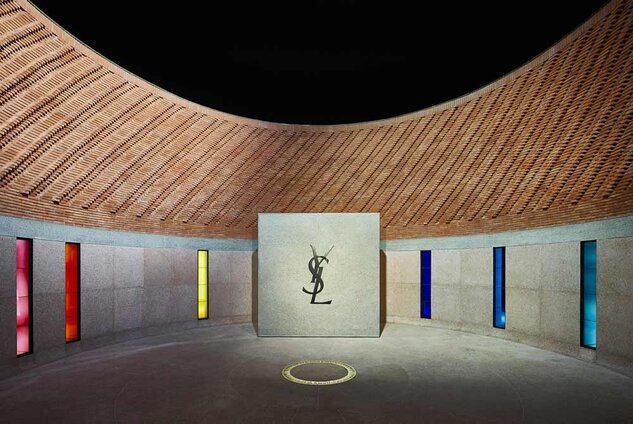
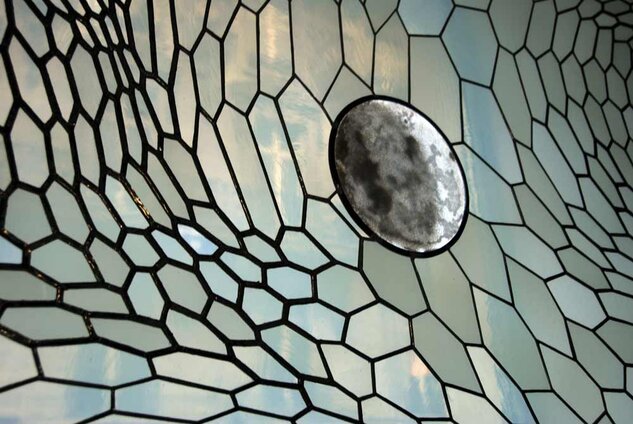
Georges (seated in the centre) and Raymond (standing on the left ) Duchemin, 1925, Atelier Gruber
Yves Saint Laurent Museum in Marrakech (Morocco). Studio KO Architectes - Ateliers Duchemin.
Salon Ladurée Champ Élysée in Paris (France). Design Roxane Rodriguez - Ateliers Duchemin.
Are you more of a creative or restoration workshop?
M.R.: We carry out as many restoration projects as creative projects and we try to ensure that this balance is maintained. France has the largest heritage stock of stained glass in the world with more than 90,000m2 of old glass roofs. So, there is a lot to do in terms of renovation and maintenance, whether it be of religious or civil heritage.
Recently, we have been simultaneously working on the renovation of the dome of the historic headquarters of Societe Generale, the creation of glass roofs for a private residence in Qatar and the creation of contemporary stained glass windows in collaboration with Jean-Michel Alberola for the Saint-Lazare cathedral in Autun in Saône-et-Loire (France) and Véra Molnar for the Lérins abbey in the Alpes-Maritimes (France).
In the context of creative projects, how does the relationship between the master glass-maker and the artist work?
M.R.: This can vary from one project to another, but today there are very strong collaborations between our workshop and certain artists, such as the ornamentalist Pierre Marie with whom we have established a real relationship of trust over time. This transforms the way of designing civil heritage projects because the stained glass window is conceived right from the very beginning of the creative process. In the case of private commissions, stained glass is often integrated at the end of the project, sometimes at the request of clients.
Nowadays, decorators think more spontaneously about stained glass. This revival reminds me of the relationship between master glass-maker Louis Barillet and architect Mallet-Stevens in the 1930s, for whom our family also worked.

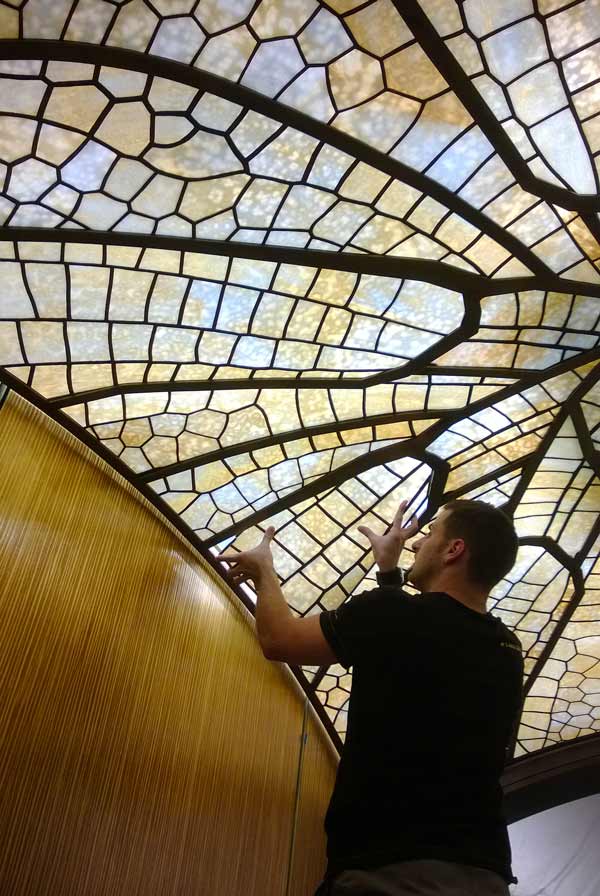

Societe Generale head office at 29 bd Haussmann in Paris. Ateliers Duchemin.
Creation of contemporary stained glass windows for the Saint-Joseph Church in Pontivy (France). Patrick Ramette - Ateliers Duchemin.
Zenith Glass Roof of the Villa Alpina in Gstaad (Switzerland). Design Brian McCarthy - Ateliers Duchemin.
What are your most significant experiences as a master glass-maker?
M.R.: Relationships with contemporary artists are very precious moments. About fifteen years ago, meeting the artist Jean-Michel Alberola, who designed stained glass windows for Nevers Cathedral, was decisive in my choice to join the family workshop, even though I had been considering other careers.
The creation of the Robert Morris stained glass windows in Saint-Pierre de Maguelone in 2002 was also very moving because the project relied on know-how — specifically, wavy glass — developed by my great-grandfather that we were reusing for the first time in our generation!
...How do you see the future of Ateliers Duchemin?
M.R.: As in all crafts, time is a fundamental concept. To acquire maturity in our highly qualified professions, it takes at least ten years. But beyond the gradual acquisition of demanding know-how, the time spent in the workshop also allows for the honing of a certain Duchemin signature, an intangible and difficult to define trademark which is unique to us.
It is therefore very important that our team, made up of around ten craft smen, can plan for the long term within the workshop. This is a real challenge in our society, where people no longer pursue a career in a single company as was the case for previous generations. We also need to look forward to the transfer of our exceptional know- how, training employees in a difficult profession that is oft en far removed from the idealised image of the craft sman’s profession. But the diversity of requests and projects that we carry out as a team, the relationships that we create with living artists allow us to look forward enthusiastically to the years to come!
We carry out as many restoration projects as creative projects.
Rebirth of a dome
From 2022 to 2023, Ateliers Duchemin participated in the renovation of the dome of the Societe Generale head office, at 29 boulevard Haussmann in Paris. Its glass roof, created at the beginning of the 20th century by master glass-maker Jacques Galland and listed in the Supplementary Inventory of Historic Monuments, is one of the largest in Paris. It extends over 18 metres in diameter and 27 metres in height.
During this renovation, more than 1,350 panels, or nearly 1,250m2 of stained glass windows were removed and taken to the workshop where they were dismantled, cleaned, repaired or replaced (for 30% of the broken glass) then reassembled by the glass artisans, before being refitted on site.
This colossal work required nearly two years of study, a year and a half of work and the assistance of companies with very specific skills: a heritage architect qualified to work on historic monuments, exceptional craft smen, a team of master glass-makers, rope access technicians and electricians.
“This project was unique for Ateliers Duchemin in several ways,” remembers Marie Rousvoal. “Beyond the size and the beautiful craft smanship of the dome, we had to integrate new information into our restoration process. Indeed, the renovation work on the entire building, having revealed the Eiffel-type technical dome which held the glass roof, meant it was now necessary for it to be visible to the public on both sides of the stained glass window.”
“The large number of actors involved and the technical conditions were also exceptional. The branch remained open during the work and so we removed and replaced the stained glass windows during the night. We also worked in a sealed-in manner, in order to protect employees and workers from lead dust.”
“All this was made possible thanks to excellent coordination between the teams and stakeholders involved. This collaboration has not only allowed this glass roof to be preserved for the present but also for the future, by facilitating future handling operations related to lighting, ventilation and cleaning... This glass roof had not been restored since its creation, and it is now ready to survive the next hundred years!”
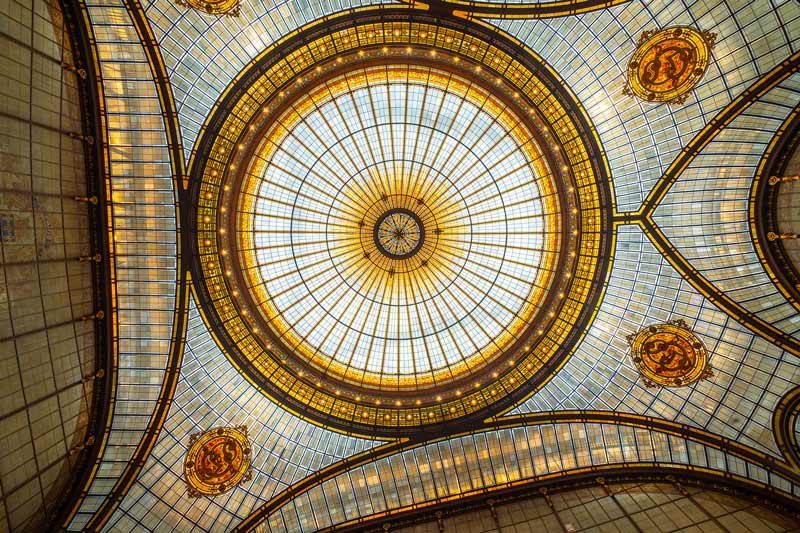

Restoration of the dome of the Societe Generale head office at 29 bd Haussmann in Paris. Ateliers Duchemin.
The glass roof of the Societe Generale Head Office is now ready to survive the next hundred years.

